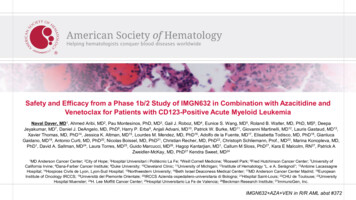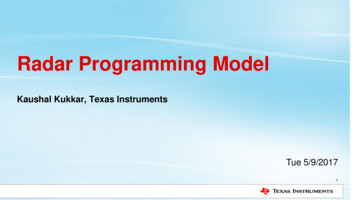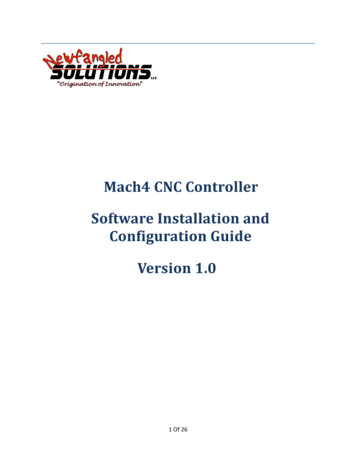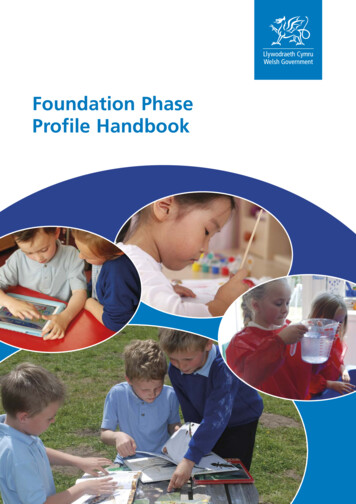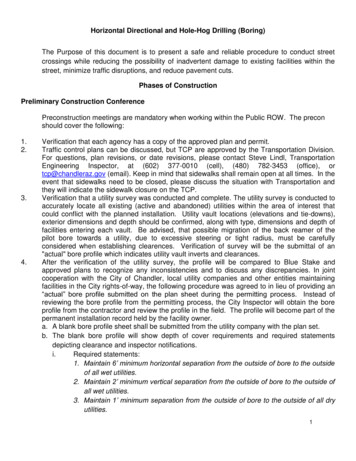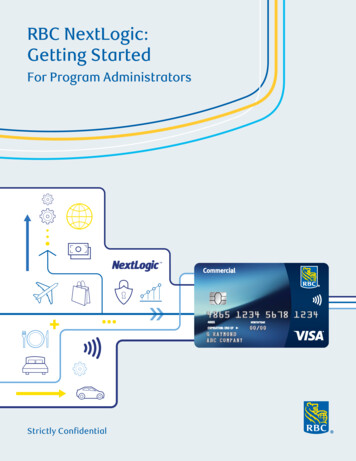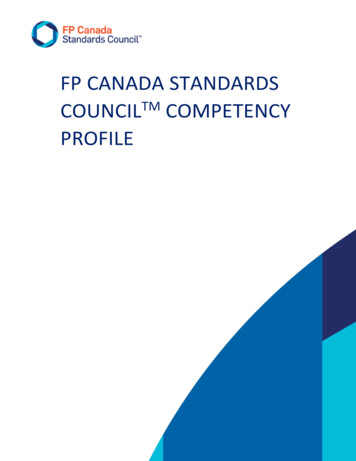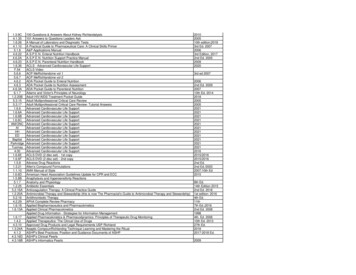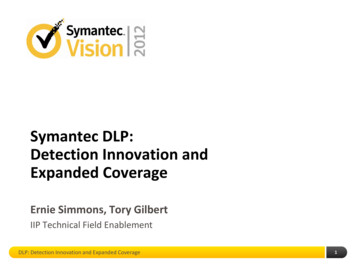
Transcription
IMGN632 in BPDCN, abstract #167Clinical Profile of IMGN632, a Novel CD123-Targeting Antibody-DrugConjugate (ADC), in Patients with Relapsed/Refractory (R/R)Blastic Plasmacytoid Dendritic Cell Neoplasm (BPDCN)Naveen Pemmaraju MD1, Giovanni Martinelli MD2, Elisabetta Todisco MD3, Andrew A. Lane MD PhD4, Evelyn Acuña-CruzMD5, Eric DeConinck MD PhD6, Eunice S. Wang MD7, Kendra Sweet MD MS8, David A. Rizzieri MD9, Luca Mazzarella MDPhD3, Daniel J. DeAngelo MD PhD4, Pau Montesinos MD5, Corrado Tarella MD3, Harry P. Erba MD PhD9, Claudio CerchioneMD2, Marina Konopleva MD PhD1, Hagop Kantarjian MD1, Callum M. Sloss PhD10, Kara Malcolm RN10, Patrick A. ZweidlerMcKay MD PhD10, Naval G. Daver MD11MDAnderson Cancer Center, Houston, TX; 2University of Bologna, Bologna, Italy; 3Istituto Europeo di Oncologia, Milan, Italy; 4Dana-FarberCancer Institute, Boston, MA; 5Hospital Le Fe, Valencia, Spain; 6CHU Besançon, France; 7Roswell Park Comprehensive Cancer Center, Buffalo,NY; 8Moffitt Cancer Center, Tampa, FL; 9Duke Cancer Center, Durham, NC; 10ImmunoGen, Inc., Waltham, MA
BPDCN Background BPDCN is a rare, aggressive hematologic malignancycharacterized by historically poor overall survival andlimited therapeutic options Overexpression of CD123 (IL-3Rα) is present in all BPDCNcases, thereby establishing this surface marker as arational target for therapeutic intervention Despite the recent approval of tagraxofusp-erzs, outcomesremain poor in the setting of relapsed and refractory (R/R)BPDCN and novel approaches are urgently neededPemmaraju NEJM 2019IMGN632 in BPDCN, abstract #167
IMGN632: A Novel CD123-Targeting ADC Novel Anti-CD123 Antibody– High affinity binding to CD123– Unique epitope in extracellular domainNovel IGN Payload (DGN549)– DNA-alkylating activity, single strand DNA breaks (vs. doublestrand)– Uniform drug antibody ratio (DAR 2)Novel Peptide Linker– Confers greater stability in circulation– Efficient intracellular payload releaseIMGN632 demonstrated 22-40% ORR in R/R AML at the RP2Dof 0.045 mg/kg every 3 weeks, in subgroups of de novo andrelapsed patients (ASH 2019)Kovtun Blood Adv 2018, Daver ASH 201912341 - ADC binds target2 - ADC internalized3 - Payload released4 - Payload alkylates DNAIMGN632 in BPDCN, abstract #167
Efficacy in refractory BPDCN PDX models IMGN632 rapidly cleared BPDCN in the bone marrowIMGN632 dramatically extended the lifespan of BPDCN tumor-bearing miceZhang Konopleva ASH.2018IMGN632 in BPDCN, abstract #167
Study Design and ObjectivesStudy Design Patients 18 years old BPDCN, R/R or frontline Any CD123 positivity (flow cytometry or IHC) Up to 4 prior lines of therapy No minimum serum albumin requirement IMGN632 (0.045 mg/kg) is administered IV in under 30 minutes on day 1 of a 21-daycycleObjectives Establish safety and tolerability and initial efficacy of IMGN632 in patientswith BPDCNIMGN632 in BPDCN, abstract #167
Patient Characteristics (n 29)Age years, median (range)Gender, % (n)Disease, % (n)Baseline status, % (n)Prior therapy, % (n)72y (19-82)MaleFemaleCompartment involvementSkinBone marrowLymph node/visceral76% (22)24% (7)Prior/concurrent malignancyFirst relapsePrimary refractoryRelapsedUntreatedPts with 2 prior therapiesIntense (e.g. HyperCVAD, FLAG, CHOP)Prior exposure to tagraxofusp-erzsPrior allogeneic stem cell transplant24% (7)21% (6)59% (17)17% (5)3% (1)45% (13)52% (15)45% (13)24% (7)69% (20)62% (18)52% (15)IMGN632 in BPDCN, abstract #167
Favorable safety profile (TEAEs 15%) (n 29) No capillary leak syndrome (CLS)No drug related discontinuationsNo drug related deaths, 30-day mortality0%The most common grade 3 AEs werethrombocytopenia, febrile neutropenia,and hyperglycemia (10% each)Rare liver-related AEs– One (3%) grade 3 LFT elevation:Gr3 ALT for 7 days (DLT), resolved– One (3%) grade 3hyperbilirubinemia and weight gain:“Grade 2 clinical VOD” resolved andwent to HSCTIMGN632 in BPDCN, abstract #167
Efficacy in R/R BPDCN In all R/R BPDCN patients:– Overall response rate (ORR) 29% (8/28, 2 CR, 2 CRc*, 1 CRi, 3 PR)– Composite complete remission rate (CCR#) of 18% (5/28) Importantly, in patients with prior tagraxofuspexposure:– ORR was 31% (4/13, 1 CR, 1CRi, 2 PR)– CCR of 15% (2/13) Among 15 patients with bone marrow responseassessment to date, 60% (9/15) achieved a bonemarrow complete remission (blasts 5%), most(78%, 7/9) also achieving an overall response* clinical CR: CR criteria EXCEPT limited residual skin disease “marked clearance of all skin lesions from baseline;residual hyperpigmentation or abnormality with BPDCN identified on biopsy (or no biopsy performed)”# CCR CR CRc CRiIMGN632 in BPDCN, abstract #167
Time on treatment and response 39% (11/28) remain ontreatment Responses are often rapid:mean time to response 1.1months (range 0.7-3.5) Durable responses seen (up to9.2 months) without HSCTIMGN632 in BPDCN, abstract #167
Responses in refractory patients 63yo female with BPDCN, refractoryto tagraxofusp x2 presented withextensive marrow and skininvolvement 69yo female with MDS/BPDCN,refractory to tagraxofusp, CLAG-M,CLAG and presented with extensiveskin/PET/BM involvement.IMGN632 in BPDCN, abstract #167
Conclusions This clinical trial represents the largest-to-date prospectivegroup of uniformly treated patients with R/R BPDCN Favorable safety profile with no cases of CLS, limited grade 3 TEAEs, notreatment-related discontinuations, 0% 30-day mortality, and no treatmentrelated deaths– IMGN632 administered every 3 wks, typically given in the outpatient setting IMGN632 demonstrated a 29% (8/28) ORR, with 5 complete responses,including patients who had failed prior tagraxofusp-erzs– Multiple durable responses observed in the absence of HSCT FDA Breakthrough Therapy Designation (BTD) granted in R/R BPDCNEnrollment is open for patients with R/R and frontline BPDCNIMGN632 in BPDCN, abstract #167
Novel Anti -CD123 Antibody - High affinity binding to CD123 - Unique epitope in extracellular domain Novel IGN Payload (DGN549) - DNA-alkylating activity, single strand DNA breaks (vs. double

